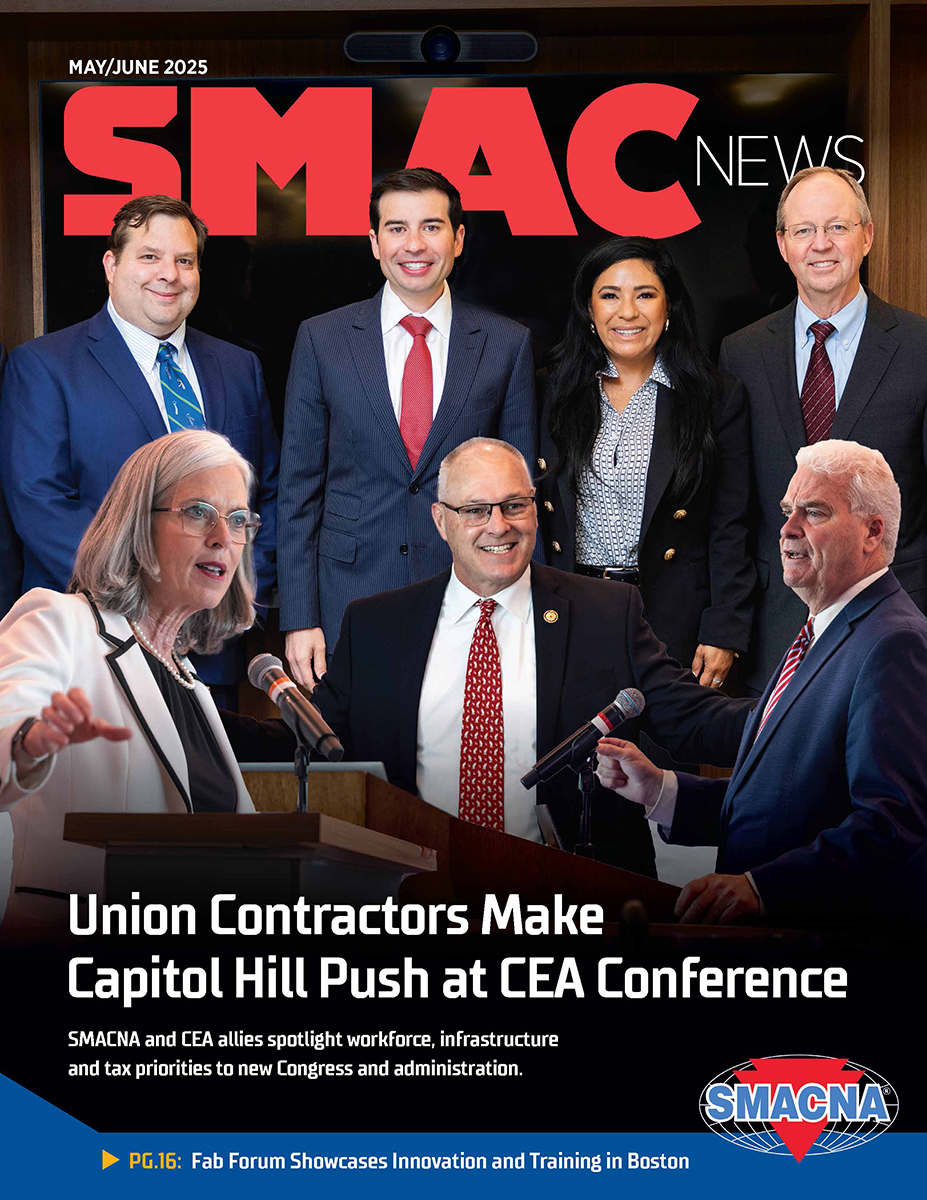Fab Forum Showcases Innovation and Training in Boston
Sheet metal leaders gather for hands-on learning and facility tours.
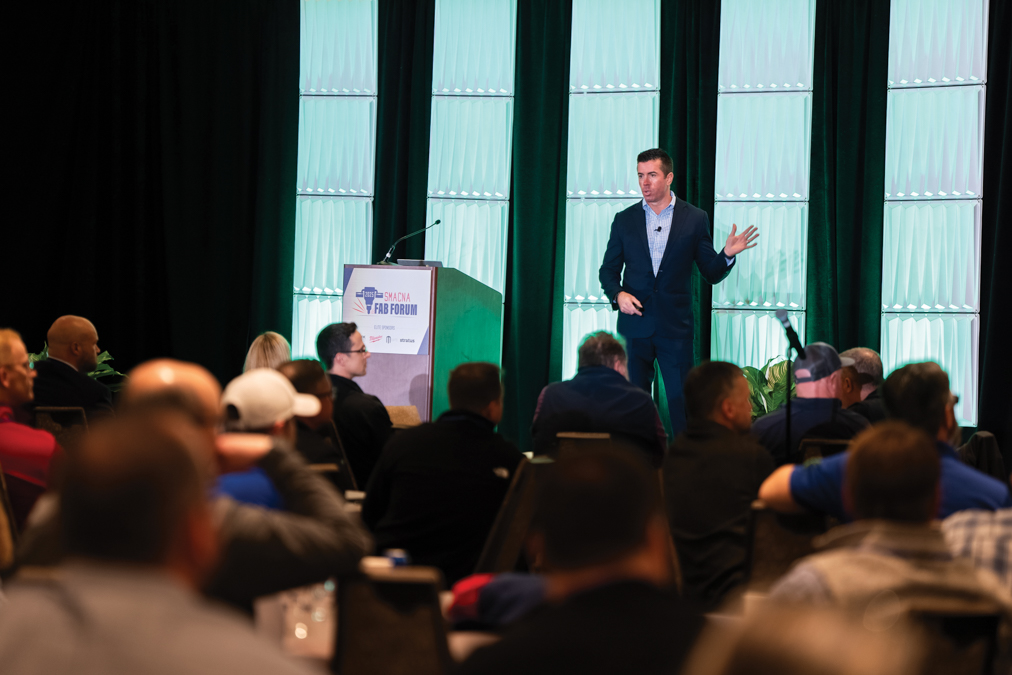 The 2025 Sheet Metal and Air Conditioning Contractors’ National Association (SMACNA) Fab Forum on April 7-9 in Boston, Massachusetts, wasn’t just another trade show. It was a working summit for the sheet metal and HVAC industry, where the promise of technology met the grit of real-world fabrication.
The 2025 Sheet Metal and Air Conditioning Contractors’ National Association (SMACNA) Fab Forum on April 7-9 in Boston, Massachusetts, wasn’t just another trade show. It was a working summit for the sheet metal and HVAC industry, where the promise of technology met the grit of real-world fabrication.
Over three days, more than 200 contractors, engineers and industry leaders gathered for facility tours, hands-on learning and frank discussions about what’s next for fabrication, workforce and technology.
Walking the Shop Floor
The event’s highlight was the exclusive tour of McCusker-Gill’s 60,000-square-foot fabrication facility in Hingham, Massachusetts — a shop renowned for its clean layout, digital integration and top-of-the-line equipment.
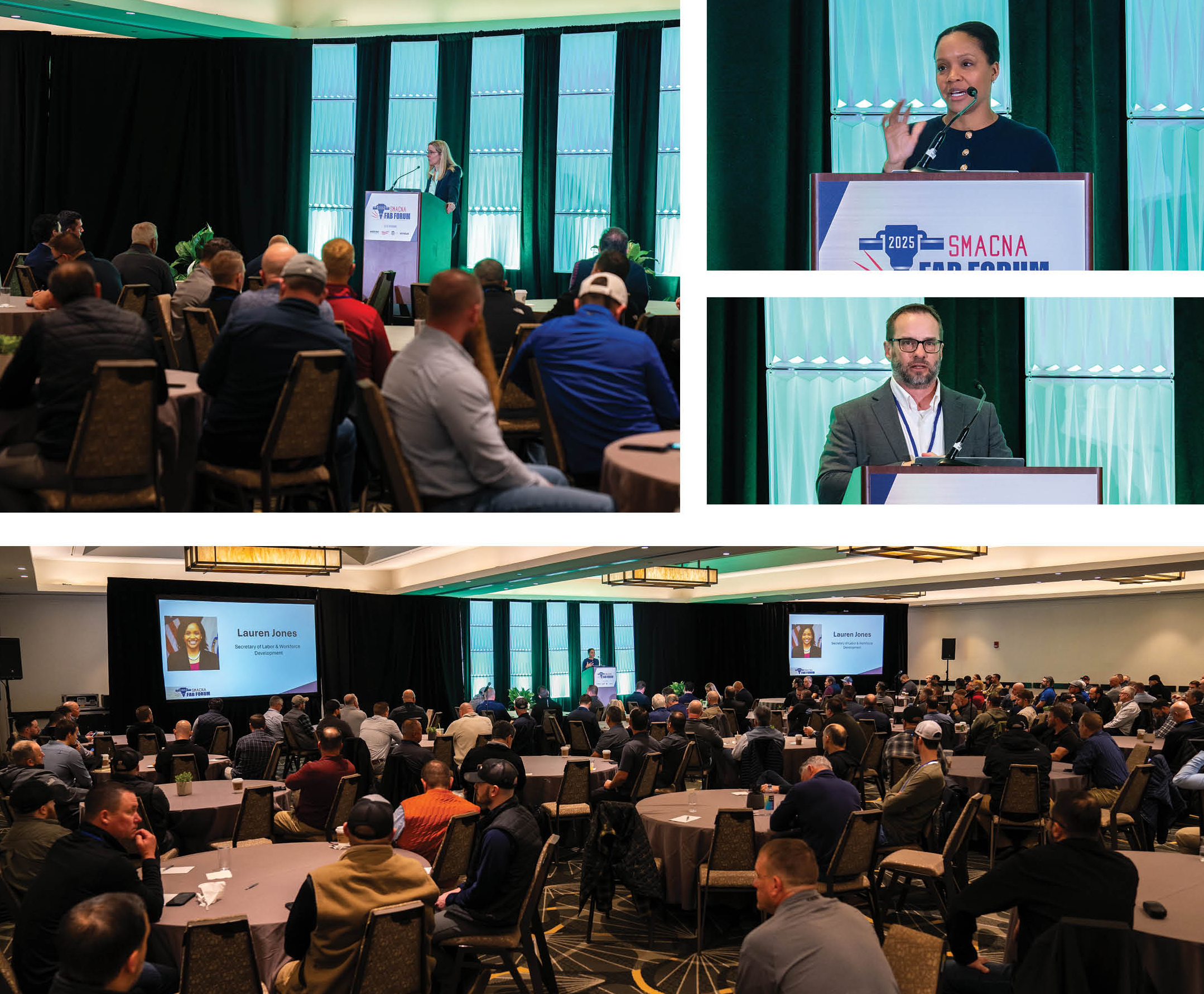
Attendees saw firsthand how the team uses automated plasma tables, digital layout tools and cloud-based tracking to manage complex HVAC ductwork projects. Attendees thought the way they integrated real-time tracking and digital workflows was a blueprint for what’s possible in their own shops.
It’s great “seeing how different companies do different things,” explains Keegan Knoup, a technician at Helm Mechanical, Freeport, Illinois. “Just because you may think you’re the best at something doesn’t mean you are or that someone isn’t doing it better than you.”
What impressed multiple people was McCusker-Gill’s prefab area.
“They have 30,000 square feet just for prefab,” exclaims Allison Ostenberg, training coordinator for Western Washington JATC. “Seeing the workflow and process they have was amazing.
“I’ve never seen a shop that has a whole dedicated prefab space like they do. I’ve heard of it but never seen it done, so it was really cool to see it today,” Knoup adds.
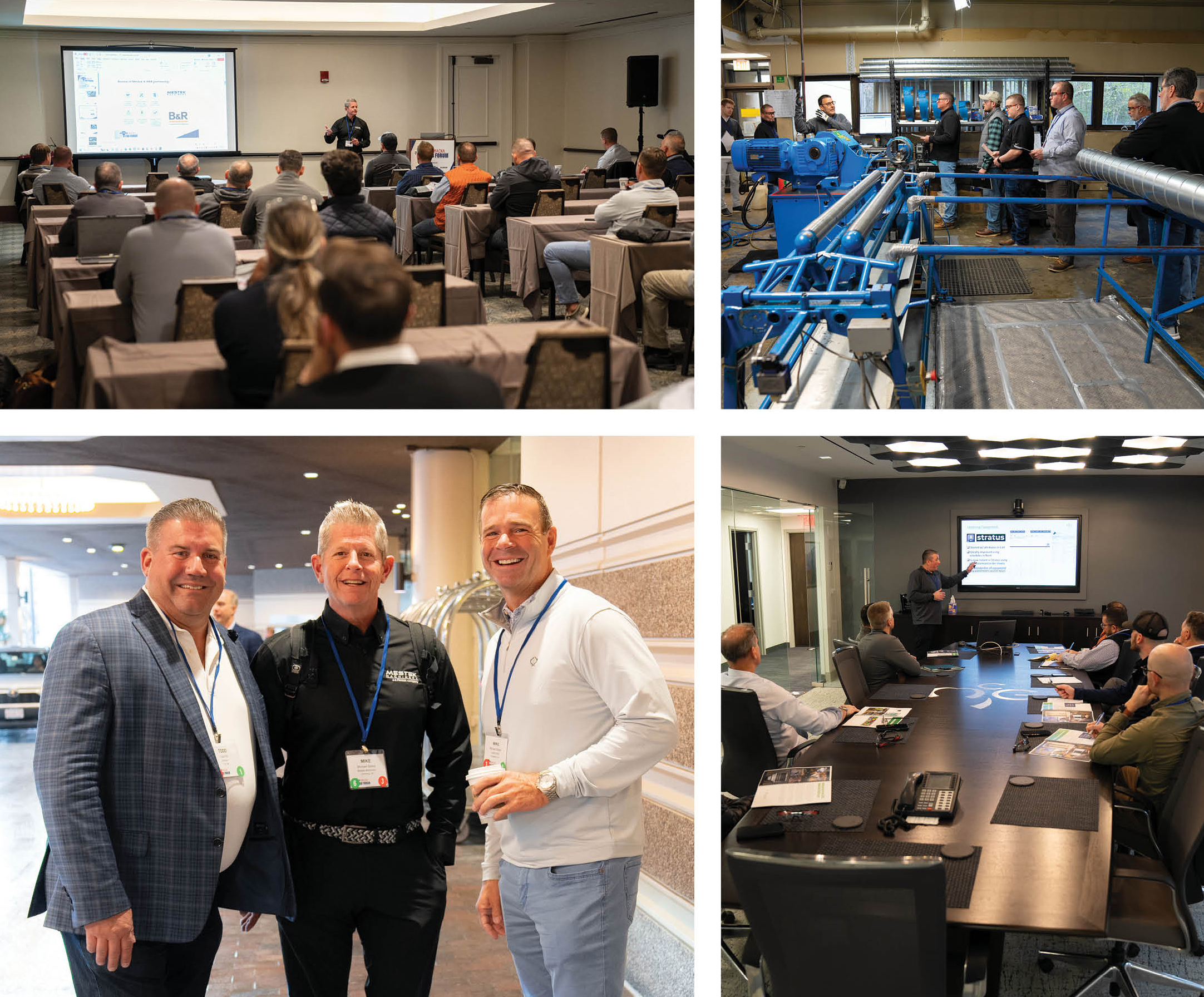
“The shop’s workflow is so straightforward. It was one of the cleanest shops I’ve ever seen,” adds Michell Acosta, vice president of operations at Acosta Sheet Metal Manufacturing, San Jose, California. “Getting an idea of how they move things through their workflow is really interesting. The tour was really informative and very valuable.”
The tour of Sheet Metal Workers Local 17’s training center in Dorchester, Massachusetts, was equally impactful. Attendees got a close look at how the next generation is being trained on both legacy skills and the latest digital tools.
Local 17 center offers a comprehensive apprenticeship program that covers both traditional sheet metal skills, such as hand fabrication, welding and HVAC installation, and advanced digital tools, such as 3D modeling, computer-aided drafting (CAD) and automated fabrication equipment. Apprentices rotate through hands-on stations, learning everything from blueprint reading to operating plasma tables and digital layout systems.
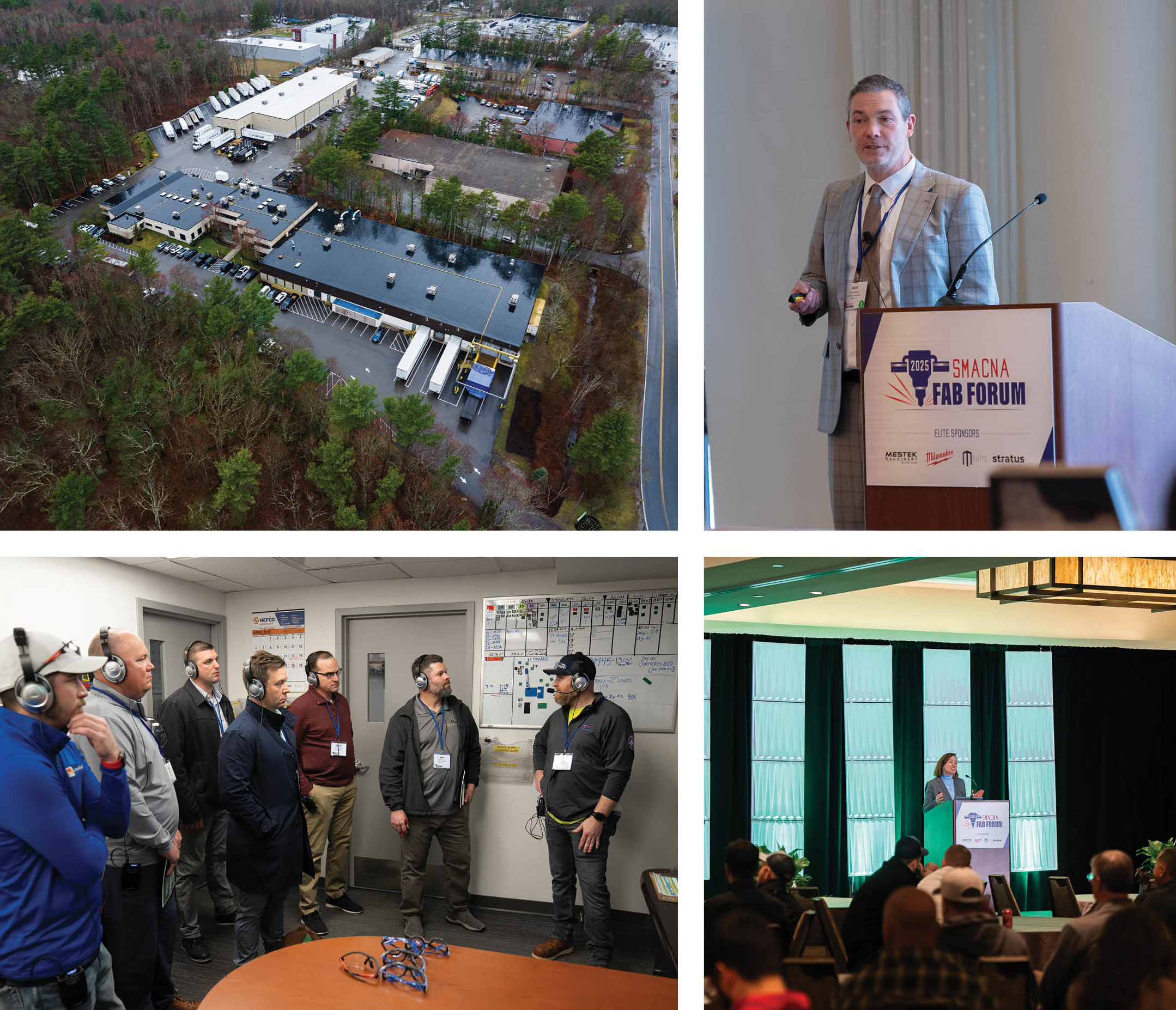
Local 17’s training center is also committed to community outreach, working with local high schools and job fairs to attract a diverse new generation of sheet metal workers. Attendees praised its ability to prepare apprentices for the real world.
AI, Automation and the Human Factor
The forum didn’t shy away from the tough topics. Hugh Seaton, SMACNA’s AI consultant and founder of The Link.ai, delivered a keynote that was both optimistic and cautionary about the intersection and overlap of AI, robots and automation.
“AI is a prediction machine,” Seaton says. “It’s great for repetitive tasks — inventory, paperwork, warehousing — but it’s not a replacement for the judgment and intuition that experienced tradespeople bring to the table.”
This means AI isn’t going to take on real jobs overnight like some people fear, and the construction industry has the ability now to shape the path AI takes moving forward. “Contractors get to choose what they adopt with AI and say, ‘This is what we need it to do and this is what we don’t trust it to do,’” Seaton explains.
Ostenberg was relieved to hear this. It was refreshing to hear “your job isn’t at risk and you just have to stay up to date and learn how to operate the equipment, and it’s not going to take your job; it just shifts it,” she says.
While the risk isn’t that AI will take your job, there is a “risk is that people will over-rely on it and stop thinking critically,” Seaton says, adding that by shaping the technology, contractors can tell vendors what they need and not the other way around.
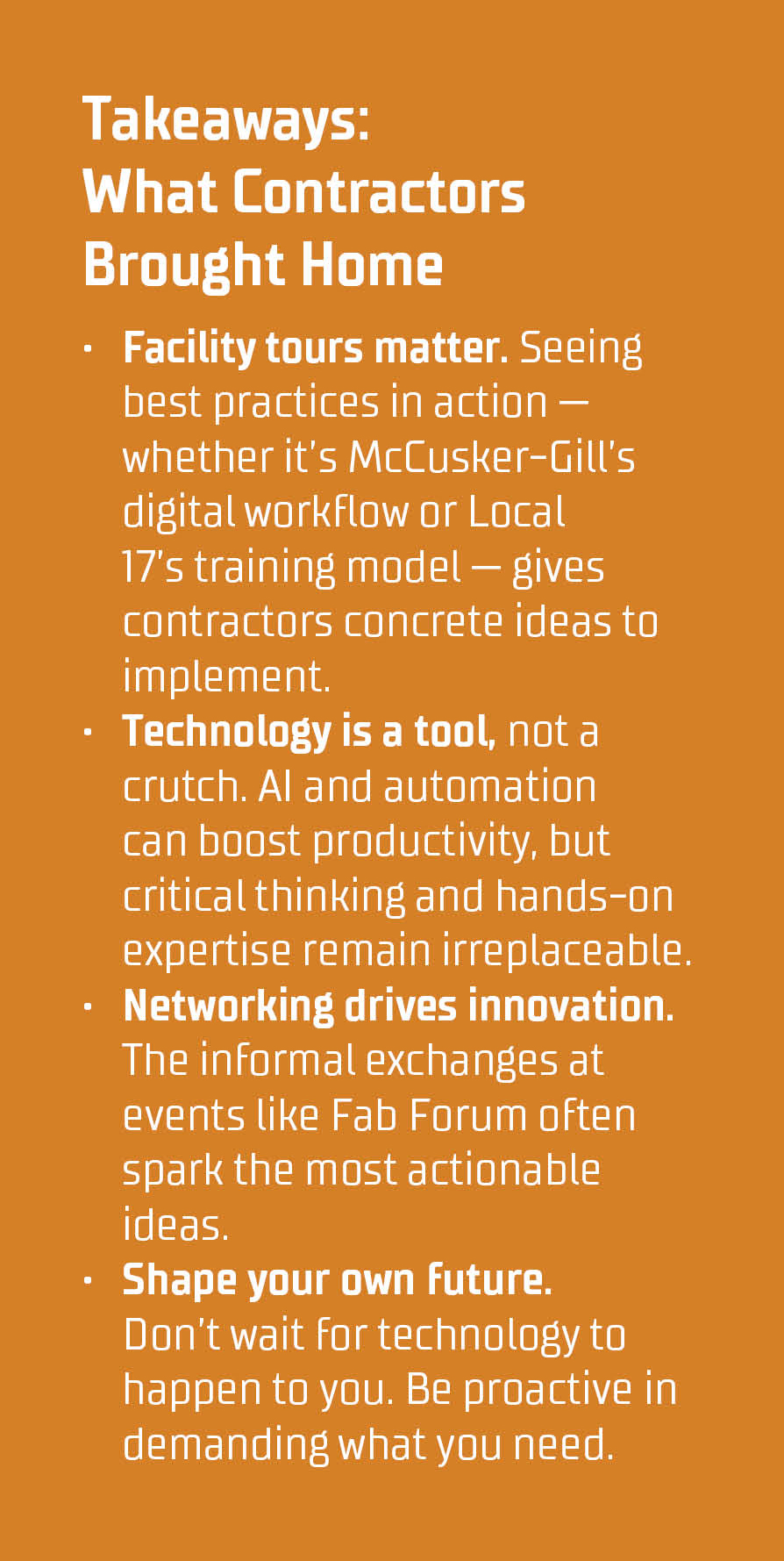
“As managers, business owners and individuals in their own careers, it’s important not to fall into the trap of over-relying on AI,” Seaton stresses. “If you let it, it will diminish the habit of critical thinking. Be vigilant about not passing things through AI without looking at it. Make sure there’s a step where a human is involved. If you’re aware of the dangers, own the output and check it.
“AI has lots of promise,” he continues, “but you just have to know the risks.”
Networking at the Fab Forum was more than just handshakes and business cards. You learn as much from your fellow contractors as you do from the formal sessions. It’s about sharing what works and what doesn’t.
“The networking has been fabulous,” Ostenberg says. “I connected with someone in my local area that I haven’t met before that is interested in coming and teaching some continuing education classes at our JATC, so I’m excited about that.”
The event also spotlighted the industry’s push to recruit new talent. As covered by SMACNA, efforts to bring high schoolers into the trades are revitalizing shop classes and helping fill the workforce pipeline — a theme echoed throughout the forum.
The 2025 Fab Forum was, at its heart, a gathering of people who care deeply about their craft and their future. It was less about hype, more about honest assessment and practical steps forward. As Seaton puts it, “The next assembly line for our industry will be built by people in this room … if we keep thinking critically and sharing what we learn.”
Leaving Boston, attendees weren’t just carrying swag bags; they were bringing home new ideas, new connections and a renewed sense of purpose. The real work, as always, starts back in the shop.
Published: July 9, 2025
IN THIS ISSUE
A “Good Catch” for Safety
icon Mechanical’s proactive safety approach earns SMACNA’s 2024 Safety Innovation Award.
ARCHITECTURAL: Detroit Firm Rebuilds Historic Tower’s Copper Crown
CASS Sheet Metal battles wind, weather and tricky scaffolding to restore the iconic Detroit Towers.
CAPITOL HILL UPDATE: HVAC Tax Credits on the Chopping Block in House GOP Tax Plan
In May, House Republicans unveiled their much-anticipated tax package, and the news was not great for HVAC tax credits. The 389-page bill included the repeal of two major HVAC tax credits that address residential energy efficiency improvements.
Fab Forum Showcases Innovation and Training in Boston
Sheet metal leaders gather for hands-on learning and facility tours.
Financial Resilience: Strengthen Your Scenario Planning in 2025
Halfway through 2025, and from where we all stand, contractors’ continued challenges may seem unpredictable. Material costs have fluctuated due to regulatory changes and supply chain disruptions.
HVAC: Modern Niagara Bets Big on Ottawa’s Hard Rock Casino Revamp
In a landmark project, Modern Niagara is spearheading the transformation of an aging casino in Ottawa into a cutting-edge Hard Rock Hotel & Casino.
INDUSTRIAL: How to Navigate Explosive Growth
Allied Mechanical balances industrial megaprojects with customer loyalty and long-term strategy.
Innovating, Educating and Connecting For a Stronger Future
During my travels, I emphasize to all our members: SMACNA is your association. SMACNA exists solely to promote the interests of our members and the union sheet metal/HVAC industry.
NLRB In Limbo Following the Unprecedented Removal of Member Gwynne Wilcox
In early 2025, President Trump removed Gwynne Wilcox, a Democratic appointee to the National Labor Relations Board (NLRB), despite the fact that her five-year term did not expire until 2028.
RESIDENTIAL: Flourishing in the Residential Market
Metro Air increases its residential customer base by focusing on customer service, continued employee education and cost control.
Safety First, Profits Follow
How prioritizing safety builds a more profitable and sustainable business.
Strengthening SMACNA: Engaged Members, Stronger Connections
Entering my fourth year as CEO, I have moments when I can reflect on what it means to be a part of SMACNA.
Union Contractors Make Capitol Hill Push at CEA Conference
SMACNA and CEA allies spotlight workforce, infrastructure and tax priorities to new Congress and administration
Welcome New SMACNA Members

